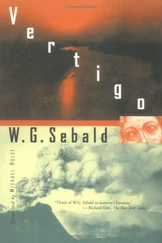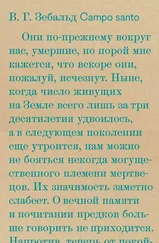Although it seems impossible, as a result of the socially and naturally determined human capacity to learn from experience, for the species to escape catastrophes generated by itself except purely by chance, studying the conditions in which destruction took place after the event is not pointless. Instead, the retrospective learning process — and this is the raison d’être of Kluge’s account, compiled thirty years after the incidents he describes — is the only way of deflecting human wishful thinking toward anticipation of a future not already governed by the fears arising from suppressed experience. The primary school teacher Gerda Baethe, a character in Kluge’s text, has similar ideas. It is true, the author comments, that to implement a “strategy from below” such as Gerda has in mind would have required “seventy thousand determined schoolteachers, all like her, each of them teaching hard for twenty years from 1918 onward, in every country that had fought in the war.” 60Despite the ironic style, the prospect suggested here of an alternative historical outcome, possible in certain circumstances, is a serious call to work for the future in defiance of all calculations of probability. Central to Kluge’s detailed description of the social organization of disaster, which is preprogrammed by the ever recurrent and ever intensifying mistakes of history, is the idea that a proper understanding of the catastrophes we are always setting off is the first prerequisite for the social organization of happiness. However, it is difficult to dismiss the idea that the systematic destruction Kluge sees arising from the development of the means and modes of industrial production hardly seems to justify the abstract principle of hope. The construction of the air war strategy in all its monstrous complexity, the transformation of bomber crews into professionals, “trained administrators of war in the air,” the necessity of countering, as far as possible, any personal perceptions they might have such as “the neat and tidy fields below them, or any confusion of the sight of urban streets and squares with impressions of home,” and of overcoming the psychological problem of keeping the crews interested in their tasks despite the abstract nature of their function, the problems of conducting an orderly cycle of operations involving “200 medium-sized industrial plants” flying toward a city, the technology ensuring that the bombs would cause large-scale fires and firestorms — all these factors, which Kluge studies from the organizers’ viewpoint, show that so much intelligence, capital, and labor went into the planning of such destruction that, under the pressure of all the accumulated potential, it had to happen in the end. 61The central point of Kluge’s comments is to be found in a 1952 interview between the Halberstadt journalist Kunzert, who had gone west with the British troops in 1945, and Brigadier Frederick L. Anderson of the U.S. Eighth Army Air Force. In this interview Anderson tries, with some patience, to answer what, from the professional military viewpoint, is the naïve question of whether hoisting a white flag made from six sheets from the towers of St. Martin’s church in good time might have prevented the bombing of the city. His comments, initially dealing with military logistics, culminate in a statement illustrating the notorious irrationality to which rational argument can lead. He points out that the bombs they had brought were, after all, “expensive items.” “In practice, they couldn’t have been dropped over mountains or open country after so much labor had gone into making them at home.” 62The result of the prior claims of productivity, from which, with the best will in the world, neither responsible individuals nor groups could dissociate themselves, is the ruined city laid out before us in one of the photographs included in Kluge’s text. The caption he gave it is from Marx: “We see how the history of industry and the now objective existence of industry have become the open book of the human consciousness , human psychology perceived in sensory terms.…” (Kluge’s italics).
The reconstruction that Kluge was thus able to make of the disaster, in far more detail than the summary of it given here, can be likened to the revelation of the rational structure of something experienced by millions of human beings as an irrational blow of fate. It almost seems as if Kluge were responding to the question put by the allegorical figure of Death in Nossack’s Interview mit dem Tode (“Interview with Death”) to his interlocutor: “If you like, you can see how I go about my business. There’s no secret to it. The fact that there is no secret is the point. Do you understand me?” 63Death, introduced to us in this text as a suave entrepreneur, explains to his listener, with the same ironic patience as is evident in Brigadier Anderson’s attitude, that fundamentally everything is just a question of organization, and organization manifested not merely in the collective catastrophe but in all areas of daily life, so that to find out its secret all you need to do is visit a tax office or some similar civil service department. In Kluge’s work, this very link between the vast extent of the destruction “produced” by human beings and the realities we experience daily is the point upon which the author’s didactic intention turns. Kluge reminds us all the time, and in every nuance of his complex linguistic montages, that merely maintaining a critical dialectic between past and present can lead to a learning process which is not fated in advance to come to a “mortal conclusion.” The texts with which Kluge seeks to promote this aim correspond, as Andrew Bowie has pointed out, neither to the pattern of retrospective historiography nor to the fictional story, nor do they try to offer a philosophy of history. 64Instead, they are a form of reflection on all these methods of ours for understanding the world. Kluge’s art, to use the term in another way here, consists in using details to illustrate the main current of the dismal course so far taken by history. For instance, there is his mention of the fallen trees in the Halberstadt town park, “where silk-moth caterpillars had lived when they were planted in the eighteenth century,” and the following passage: “(Number 9 Domgang) In the windows stood a selection of tin soldiers, which had fallen over immediately after the raid, the rest of them being packed away in boxes stored in cupboards, 12,400 men in all, Ney’s Third Corps as they desperately advanced through the Russian winter toward the eastern stragglers of the Grande Armée. They were put out on display once a year, during Advent. Only Herr Gramert himself could arrange his troop of soldiers in their correct order. In his terrified flight, leaving his beloved soldiers, he has been struck on the head by a burning beam, and can form no further plans. The apartment at Number 9 Domgang, with all its marks of Gramert’s personal style, lies quiet and intact for another two hours, except that it grows hotter and hotter during the afternoon. Around five o’clock it catches fire and so do the tin soldiers, who melt into lumps of metal in their boxes.” 65
A briefer didactic fable than this could hardly be written. Kluge’s way of providing his documentary material with vectors through his presentation of it transfers what he quotes into the context of our own present. Kluge “does not allow the data to stand merely as an account of a past catastrophe,” writes Andrew Bowie; “the most unmediated document … loses its unmediated character via the processes of reflection the text sets up. History is no longer the past but also the present in which the reader must act.” 66The information that Kluge’s style thus imparts to readers about the concrete circumstances of their present existence, and possible prospects for the future, marks him out as an author who, on the perimeter of a civilization to all appearances intent on its own end, is working to revive the collective memory of his contemporaries who “with the obviously inborn desire for narrative, [have] lost the psychological power to remember even within the destroyed city itself.” 67It seems likely that only his preoccupation with this didactic business enables him to resist the temptation to offer an interpretation of recent historical events purely in terms of natural history, just as elements of the science fiction genre in which readers know all along what the end will be appear again and again in his work. Instead, he interprets history in a way rather like, for instance, Stanislaw Lem’s: as the catastrophic consequence of an anthropogenesis based from the first on evolutionary mistakes, a consequence that has long been foreshadowed by the complex physiology of human beings, the development of their hypertrophied minds, and their technological methods of production.
Читать дальше












